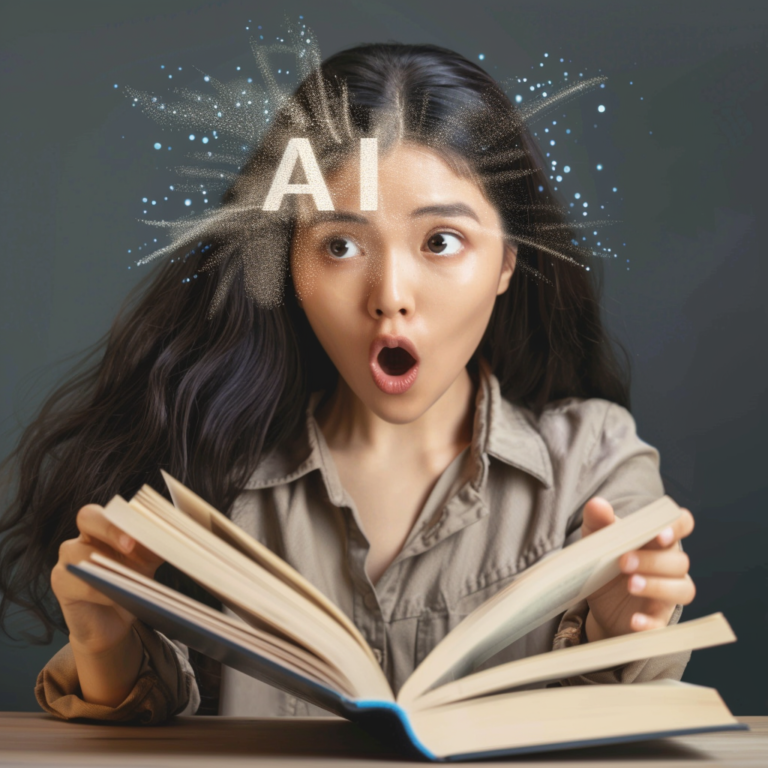If You Haven’t Jumped Into AI Yet Part 1
This is Part 1 of a series. Part 1 | Part 2 | Part 3
I’ve consumed a lot of tech press over the years. There are plenty of new technologies that drum up hype for the sake of getting people’s attention, but are not worthy of our time. There are others worthy of our attention but when they do not get it they fizzle out or get absorbed by the bigger fish of the tech world. And then there are those that do get our attention and are worth digging deeper, but you still have to sift through the hype and focus on the impactful parts.
AI is one technology to take note. It is important to recognize that AI is being positioned as a game changer in the tech world. The biggest tech companies of the world–Microsoft, Apple, Google, Meta–have all changed their entire lineup of core services to incorporate AI. Everyone, even those who believe AI is nothing but smoke and mirrors, need to get an understanding of how AI can help with everyday work .
Education literature has seen a flurry of articles/podcasts on the risks and benefits of AI, e.g. (Radeva, 2024). Without some personal experience with AI, it is difficult to navigate the discussion. This series is to help educators get a quick start in understanding how AI can impact education.
My task here is to help you save time by organizing the various capabilities of AI and help you focus on what is most important for you. I’ll break this into a 3 part series:
Part 1-What AI capabilities should I pay attention to?
Part 2-Let’s compare and contrast AI services (hands-on)
Part 3-Educational ramifications of AI
What Can AI Do?
While there is disagreement/confusion of what constitutes being called AI, let’s delineate common tasks people use AI to solve:
- Language Translation: this have been around for years, but it keeps expanding and improving every year.
- Text To Speech (TTS): also been around for years, but now can be hundreds of voices with various emotive capabilities and vocal styling, including capturing your own voice.
- Create Transcripts/Dictation: AI can take audio/video and produce a text transcript. This is great for podcasts, videos, or even live meetings. In years past, this was only available to big companies, now it is everyone.
- Summarizing: you can provide something as narrow as a PDF/ website article or broad as a topic across multiple website sources to generate a concise summary. We will personally see this incorporated more and more in tools on our devices, e.g. summarizing emails and personal messages. This capability is also having a big impact on how search engines are structured.
- Writing Informational Narrative: writing informational non-fiction content, e.g. write a 500 word essay describing the difference between mastery-based grading vs traditional grading.
- Writing Creative Narrative: write a story by giving it a list of parameters.
- Writing/Grammar/Tone Assistance: AI offers alternative wording to help simplify and emphasize clarity in writing
- Writing Computer Code: create software code by giving it a list of parameters.
- Creating Images/Media: generate images by giving it a list of parameters, now expanding to video, audio, and music.
- Interpret Pictures/Video/Audio: AI can interpret and react to visual and audio inputs, e.g. look at a landscape photo and analyze where where in the world it was taken
- Conversation: AI can interact audibly or via text; at times it will appear to be almost human with its conversational dialog.
- Tutor Assistance: explaining and walking through steps to learn a new skill or topic. This capability is having an impact on software companies with complex tools (like Microsoft, e.g. how do you create a pivot table?), and potentially can have a huge impact for educators and learners.
Many of these services are called generative–in other words, it generates/creates new content that may be based on material it has collected but is often expressed in unique ways, not necessarily a direct copy of the original work.
An important thing to consider about AI systems is the aspect of training. All these AI systems need content to train, particularly the generative AI services. Many of these AI services broadly scanned the content of the internet (similar to what search engines do) and used that material to create new, uniquely expressed content.
This touches on the most controversial sides of AI: first that systems generate incorrect information (hallucinations) presented confidently as factual. In part hallucinations reflect a problem of the material used for training. It is the typical “garbage in, garbage out” syndrome. There have been many examples of bad information that has been highlighted (or skewered) in the tech press, e.g. advising lawyers with fictitious law cases, recommending people eat rocks, offering that dogs can play in the NBA, or suggesting using glue to hold pizza ingredients on the pizza.
Another controversial problem is when generative content too closely resembles the material it trained from. While the generated content may be expressed in a unique way, it is often closely parroting the content it trained on. People treat this as a “new” problem, with some companies even suing over “stolen” content (see my post Copyright and the NYTimes-OpenAI Lawsuit). This really isn’t a new problem; I liken this to the same issue academia has struggled with for centuries: how do graduate programs and universities solve this problem? By creating a system of citation!
Note that some services provide citation but many do not. I highly, highly, highly recommend educators stick to systems that use citation with learners: 1) it helps alleviate the problem of hallucination by checking the sources and 2) it is good practice for learners to sometimes follow up and read the original content.
Depending on your work assignment and your personal approach to teaching, some AI’s capabilities listed above may have more appeal than others. In Part 2 of this series, we will hands-on compare and contrast services to get a feel for what they offer.
This is Part 1 of a series. Part 1 | Part 2 | Part 3
Resources
Radeva, M. (2024, February 15). Guest post: The Benefits and risks of chatgpt for Education. The Learning Scientists. https://www.learningscientists.org/blog/2024/2/15-1
Updated 2o24o626: added Text-to-Speech bullet







